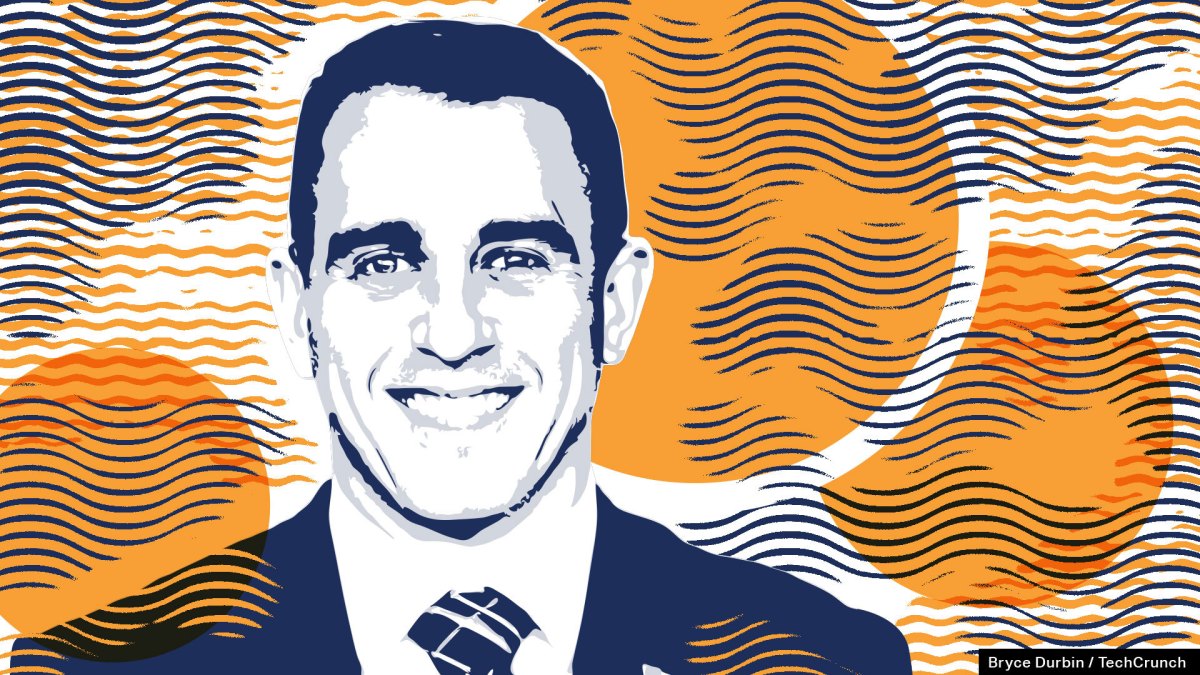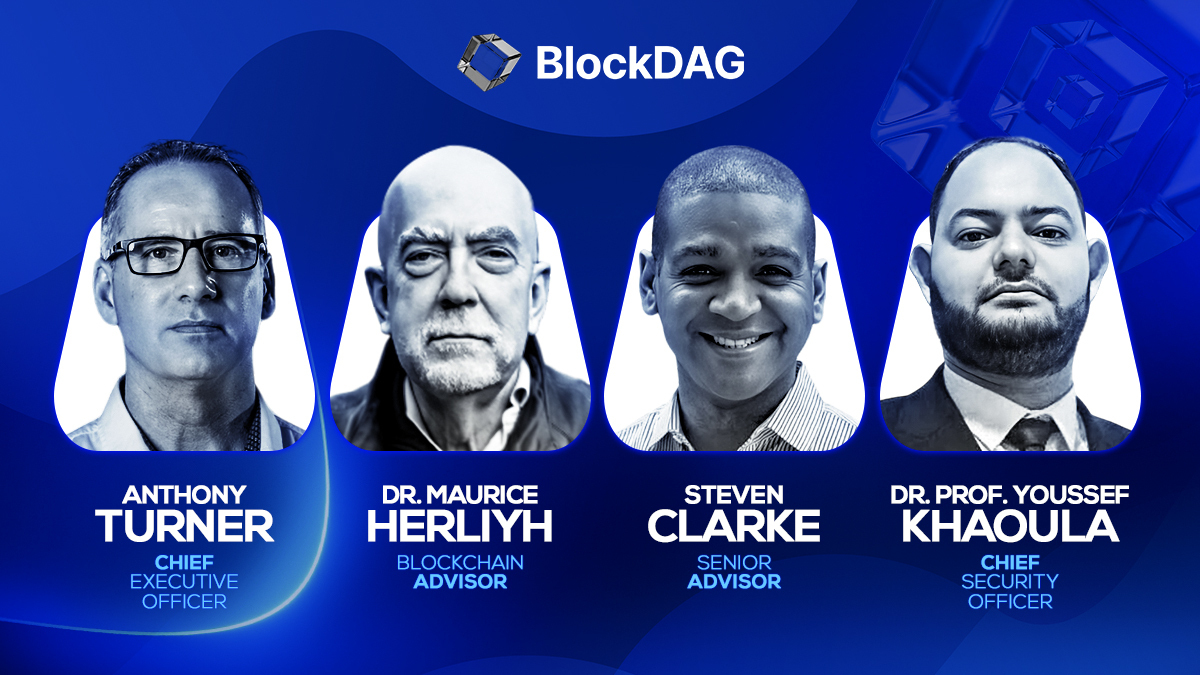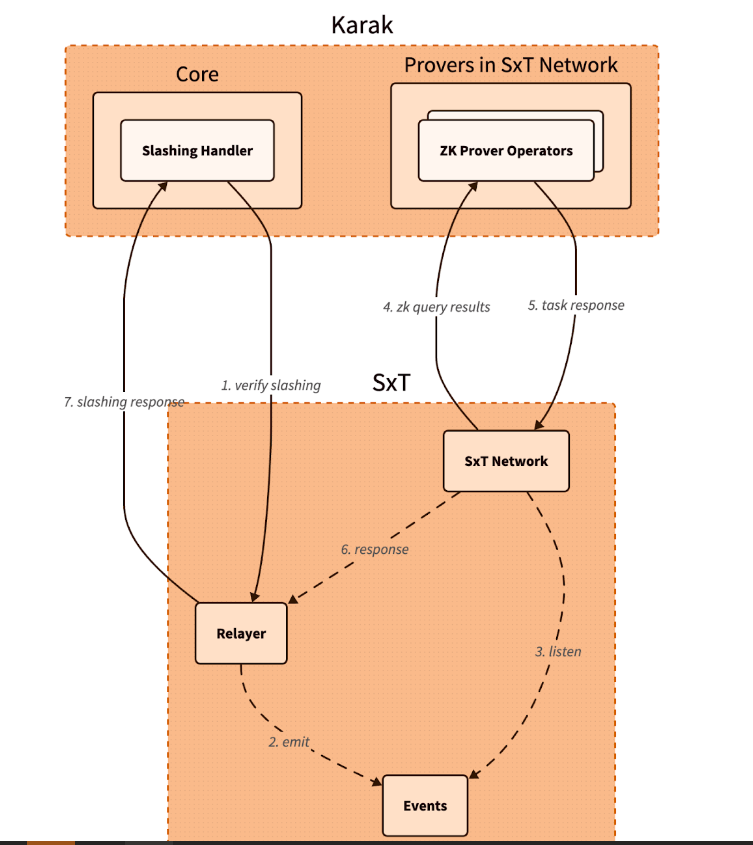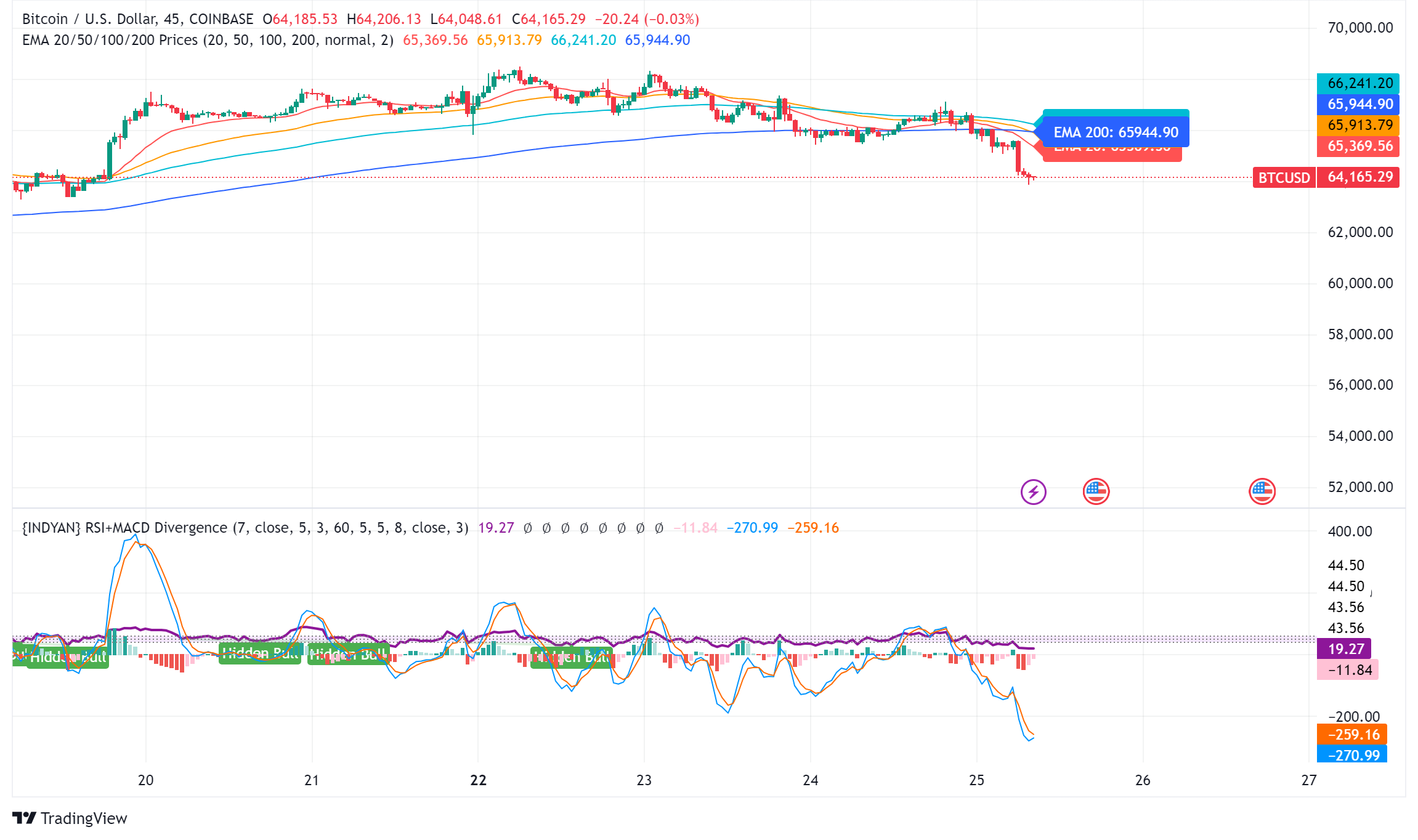Tech
From Facebook to the face of crypto: Inside Anthony Pompliano’s wild career

Bang. Bang. In the winter of 2014, a 25-year-old Anthony Pompliano was reading a book on a plane that would change his life.
The former army sergeant from North Carolina — who had turned 21 while serving in Iraq — was on his way to a job interview at Facebook for a product manager role. Pompliano had founded two small tech startups after he left military service and sold the second, a track record that attracted the attention of recruiters at both Google and Facebook. But he had spent his life so far away from Silicon Valley that he had no idea what a product manager even was.
That didn’t stop him from pursuing the job. Instead, he read some product management blogs that were all mentioning the same book. So he bought a copy. “On the flight to San Francisco, I literally read a book called ‘The Art of Project Management,’” he told TechCrunch. “Then I went into the interview and tried to regurgitate everything that I had read in the book and not sound stupid. I was fortunate enough to get the job.”
Ten years later, his level of fame in the tech industry is so wide that he’s known by a single-syllable name: Pomp.
It wasn’t a straightforward path. He earned his Valley street cred doing “growth hacking” for two years at that Facebook job; he then had a potentially near career-ending controversy with his next employer, Snapchat. He bounced back to become an investor with an enviable track record, then gained fame as an unflagging advocate for bitcoin and crypto. Today, his businesses encompass multiple podcasts and newsletters, venture investment and research firms.
Pompliano just announced his most recent venture: Professional Capital Management. It’s a company he created about two years ago to incubate startups and provide traditional asset management with some of the profits from those incubated companies. Pompliano is upfront that this business idea is going to be difficult to pull off, and that’s one of the reasons he’s attracted to the idea. Any normal person, he said, would probably not sign up to do incubation and asset management at the same time.
But his story is of an unconventional rise to success and a reputation built on hard work, luck, respect and always taking his shots.
The man behind the “bang bang”
To know Pompliano is to know he’s a man of routine. First, there is that catchphrase he uses at the start of each podcast, “Bang. Bang.”
Pompliano laughs that he has “no clue” why he started saying it. “I did it three or four times and then I didn’t do it, and the audience was like, ‘Hey, what happened?’ And I realized they almost became like an inside joke with the audience.”
He also wears the same blue and gold striped tie whenever he makes a television appearance — and which he wore during both interviews with TechCrunch. Every day, he tweets on X the same, “Good morning. Today is going to be a great day. Let’s get after it relentlessly.”
And while that might sound cheesy, “Pomp is one of the hardest-working people I have ever known. He just gets it done. I love the guy,” Mark Yusko, founder and managing director of Morgan Creek Capital Management, told TechCrunch. Morgan Creek is a North Carolina-based hedge fund claiming more than $1.3 billion of assets under management.
In addition to the newly formed Professional Capital Management business, Pompliano’s business interests span:
- The Pomp Podcast, which has over 530,000 subscribers on YouTube and has hosted names like venture capitalist Chamath Palihapitiya, Ark Invest’s Cathie Wood and boxer-turned-investor Jake Paul.
- The Pomp newsletter, which has over 260,000 subscribers and three tiers, from free to $10 per month or $500 a year.
- Pomp Investments, his family office for investments
In addition he:
- Was a co-founder of early-stage investment firm Full Tilt Capital, which backed companies like Lyft, Reddit, Everlywell and Imperfect Produce, which sold to Morgan Creek in 2018.
- Has over a million followers on Twitter, over 558,000 total YouTube subscribers, 135,000 followers on Instagram and is a frequent guest on financial TV shows like Fox Business and CNBC.
Within the Professional Capital Management venture, Pompliano folded in his existing crypto hiring firm Inflection Points, which recruits, trains and employs people in the bitcoin and cryptocurrency industry.
He also partners with founders in other ways. He sold one of his first incubations, Reflexivity Research, to DeFi Technologies earlier this year in February. Founded with a young bitcoin investor, Will Clemente, who had gained social media fame by documenting his investment, it is a well-known provider of Bitcoin, crypto, DeFi and economic analysis.
Earlier in 2024, he also co-founded the financial news and research newsletter and podcast, Opening Bell Daily, with former Business Insider reporter Phil Rosen. With former TechCrunch reporter Jacquelyn Melinek, he launched Token Relations, a firm that helps blockchain and crypto projects form direct relationships with their communities, developers and token holders.
His variety of business interests is deliberate. One of the things he learned over the years is that “people who get complacent get disrupted.” That’s why he reminds himself on a daily basis to approach investing from a beginner’s mindset, because every time he thinks he’s got something figured out, the game changes, he said.
“If you look through the evolution of the investing that I’ve done, or even the businesses that we’ve built, we’re constantly trying to iterate and evolve to make sure that we’re using the latest and greatest to be able to stay kind of ahead of everybody,” Pompliano said.
Anthony Pompliano in his classic blue suit and favorite on-camera tie during an appearance on CNBC.Image Credits: YouTube/CNBC (opens in a new window)
Always the entrepreneur
Pompliano was perhaps trained since childhood for business. The oldest of five boys, his father is founder of the data and information technology services company Anexio and his parents always encouraged their children to be entrepreneurial. Pompliano and his brothers took that encouragement literally, and were always scheming up ways to make money.
“We’d find stuff around the house and say our parents don’t need this anymore and would go try to sell it,” he said. “Or a friend would be selling something, and we would buy it and try to flip it,” he remembers.
While Pompliano can be surprisingly modest when talking about his own abilities — and to this day says he’s not sure why Facebook hired him, setting him on this career path — during a 2017 episode of the Breaking into Startups podcast, he shared some insights. By that time, he’d already left Facebook and was in a rebound phase with his career.
In thinking over the 150 people he himself had interviewed for roles at Facebook, he’d learned that there were two attributes that were harbingers of success in tech: people who can adapt to new info thrown at them and still calmly make strong decisions. And people whose instincts were to work with others to solve problems.
Pompliano says the second attribute has become “a life principle. Nobody does anything by themselves. It doesn’t mean that you need 100 people,” he told TechCrunch. “A lot of life is about getting along with other people, being likable, being able to collaborate. Success in business is less about what you get out of it, and it’s more about what value do you deliver to somebody else — how do you solve their problem?”
Those who know Pompliano say both of those traits are his superpowers.
He is “uniquely articulate in his ability to communicate with people,” said Andrew Spellman, founder and managing partner at Fifth Down Capital. Spellman invested in and is on the board of Inflection Points. He gave the example of how Pomp can always field questions that come at him, even on a TV spot when defending Bitcoin during the crypto winter.
“He takes what is, to many, including myself, a complicated asset class, or something that people don’t understand as well, and really simplifies it,” Spellman said, referring to crypto. “I find that to be a really, really unique skill set.”
Clemente, who was 20 years old when they launched Reflexivity Research, describes how Pomp mentored him.
“He was on every sales call and whenever I needed him,” Clemente said. “He has this persona on Twitter of relentless energy. He’s a workhorse, but in my experience, he is genuine.”
“Nobody does anything by themselves … A lot of life is about getting along with other people, being likable, being able to collaborate.”
Anthony Pompliano
Facebook, Snapchat and Morgan Creek
Morgan Creek’s Yusko jokingly told TechCrunch that he “discovered” Pompliano by hearing him talk on a podcast, a comment Pompliano didn’t dismiss.
“That’s a fair characterization. Mark is a pretty special guy in that he has now almost 30 years investing,” Pompliano said in response. “I credit Mark with a lot.”
He was 27 then and at a crossroads. During his time at Facebook, his cachet had risen internally until he landed a spot on a small team directly working on Mark Zuckerberg’s and Sheryl Sandberg’s social presence.
“That’s a pretty incredible opportunity for a 25- or 26-year-old to get exposure in meetings with those two individuals to see how they operate,” Pompliano recalled.
And then it looked like his tech career could have been over, just two years after it had begun.
He had jumped from Facebook to Snapchat (now Snap) in 2015 to do growth hacking there and was terminated within three weeks, according to a lawsuit he filed against Snapchat at the start of 2017. He alleged in the suit that Snapchat ended his job when he questioned Snapchat’s user numbers, a charge that the company has always denied. (It’s worth noting that in 2020, Snap entered into a $187.5 million settlement with shareholders over a lawsuit from them that made similar allegations.) Pompliano had to abandon the lawsuit when a judge ruled he was obligated to settle it in private arbitration.
After leaving Snapchat, Pompliano went to work at Brighten Labs, where he was also fired after a few months. He sued them in 2016 for wrongful termination and fraud.
Pompliano declined to comment on any of the litigation but this was a painful time in his life. He opted to get out of big tech and go back to his home state of North Carolina, far away from Silicon Valley.
“I wouldn’t have had the career, success or network had I not lived in Silicon Valley,” Pompliano said, looking back. “It’s a very special place, the heartbeat of innovation. But I also felt it was somewhat of an echo chamber, and I wanted to have relationships, connectivity and knowledge outside of it. I also enjoy living on the East Coast, and so I wanted to do that as well.”
Instead of giving up, Pompliano got right back in the game. Back in North Carolina, he and new business partner Jason Williams started Full Tilt Capital. They set out to raise a small fund of about $3.5 million to invest in early-stage companies.
They blasted through investments, at one point completing 22 deals in 90 days, Pomp told Business Insider in 2016. The pair had good enough instincts to pick a few winners, like finance-tracking app Brigit, medical testing company EverlyWell and location intelligence company Placer.ai.
Looking back now, he says, “We were fortunate enough to probably not know what we were doing. We didn’t have the battle scars.”
But he admits, “I still don’t know if I know what I’m doing when it comes to investing, especially in the private markets.”
Still, that early fund “really allowed me to realize I enjoyed investing” but also taught me that “I didn’t know how to build an investment firm,” he said.
Although he didn’t know it at the time, he was about to have another life-altering experience.
“We were going to raise $1 billion, but realized we weren’t going to raise it. After that one good meeting, the next 35 meetings were all zero.”
Mark Yusko
In search of capital
After hearing Pompliano talk as a guest on a podcast, Yusko began following him on Twitter and the two soon made plans to meet for breakfast. Their meeting turned into an all-day affair trading ideas. And that’s when Morgan Creek Digital was born. Morgan Creek bought Full Tilt in the first quarter of 2018 and launched Morgan Creek Digital to focus on crypto/blockchain investing.
It was still a radical idea at the time, Yusko said. While Fred Ehrsam’s Paradigm was also founded around 2018, and Andreessen Horowitz launched its first $300 million crypto fund in 2018, as well, most traditional VCs had not caught up yet.
Full Tilt had hoped to raise $25 million for its second fund, which was to be dedicated to crypto, but once Morgan Creek absorbed it, their dreams skyrocketed. Now they envisioned a $1 billion fund. Yusko introduced Pompliano to some potential investors.
“I sent Pomp on a first meeting up in Washington, D.C. and we got lucky with one good meeting,” Yusko said. That one good meeting was with three public pension funds, where two committed, Pompliano recalls. However, one of the people with him humbled Pompliano a bit after the meeting, telling him that they had never seen that kind of quick funding in their career before, and Pompliano should not expect it, he said.
That was a foreshadowing statement. Yusko explained that “in the first quarter of 2018, we were in a bear market, and everyone hates crypto in a bear market. We were going to raise $1 billion, but realized we weren’t going to raise it. After that one good meeting, the next 35 meetings were all zero. The University of Texas even laughed him out of the office.”
Pompliano, Williams and Yusko ended up raising $40 million, which Yusko said was good for a first-time fund, especially for three people who had never worked together before.
Around that time, Yusko and Pompliano met the folks who run John Mauldin’s Strategic Investment Conference, and they convinced Pompliano to ditch a blog he was occasionally writing on Medium and get serious about a newsletter.
The next week, he started a Substack called “The Pomp Letter.” He also launched a podcast in August 2018.
Between 2018 and 2020, the fund was investing in Bitcoin and in companies like Liquid Death. Pompliano also helped Morgan Creek Digital raise a second fund of $90 million — he is still involved as a GP in both funds.
Then in 2021, Yusko recalls Pompliano getting a call from AngelList co-founder Naval Ravikant, who wanted Pompliano to work on a new rolling fund product AngelList was doing.
So while Williams stayed at Morgan Creek Digital (and is still there), Pompliano left to work on the rolling fund at AngelList. Pomp and Yusko still work together on the Morgan Creek funds and still talk every Monday.
“He’s definitely one of my favorite people,” Yusko said.
 Mark Yusko, founder and CEO of Morgan Creek Capital ManagementImage Credits: Bryce Durbin
Mark Yusko, founder and CEO of Morgan Creek Capital ManagementImage Credits: Bryce Durbin
Crypto investing
Ironically, for a guy known for his steadfast support for crypto investing, Pompliano lost a chance to make big bucks on the first currencies he owned.
He remembers buying his first crypto mining GPU computer back in 2016 to mine Ethereum.
“I had no clue what crypto was,” he said. “There was a young kid who pitched me on the idea of buying this computer, plugging it in and it prints money. Sounds awesome, right? Who doesn’t want to buy a money printer?”
It wasn’t that simple. He recalls mining about five ether per day, each worth around $10 at the time. “I was wondering if I was ever going to get my money back,” from the investment in the machine, he said.
Then in early 2017, the price of ether crossed $100. “That caught my attention,” he said. He sold almost all of his ether holdings when the price was around $150 or $200.
“Ethereum ended up going to like $4,000 each, so not the smartest thing, in hindsight,” Pompliano smiled.
But it convinced him to focus on crypto investing. Even so, the first years at Morgan Creek Digital were wild, as crypto prices fluctuated. Pomp had faced more dangerous situations in his life –– when he was 20 he was deployed to the war in Iraq for 18 months –– yet admits he still had to learn “emotional control” about crypto volatility, Pompliano said.
“I’m human just like everyone else and when the price goes up, you feel better about yourself. When it goes down, I wish it was going up,” he said.
His wife Polina Pompliano remembers when he first started talking about Bitcoin, crypto “was not cool. It wasn’t in the mainstream.”
“Then around 2017, Kevin O’Leary was on CNBC. Anthony went on. And Kevin O’Leary was like, you know how much of your cash position is in this and Anthony told them and then he was like, ‘I forbid this. This is garbage,’” she recalled.
But over the years, the two became friends “and Kevin’s position on bitcoin has obviously changed. He’s now a big proponent of the industry. So I think that it’s amazing to see how he truly bet his reputation on this one asset” and was vindicated, she said of her husband.
Pompliano did TV appearances, wrote his newsletter and earned a rep for an even-keeled attitude even as darlings like FTX and BlockFi crashed. That cemented his reputation as a crypto guru. People kept coming to him for advice.
“I’ve done the work and had pretty high conviction on the asset class and the long-term viability” Pompliano said. “If you were to ask me where that comes from, it’s probably being exposed to extreme situations, like going to war. When you have that perspective it is pretty helpful.”
Family man
Board member Spellman said with Pompliano’s social media and business interests, you’d think that he was always running around. Not so. Pompliano and Polina are raising two children so he follows strict routines around family time, too. One of the funniest things, Spellman said, is when Pomp comes to a business dinner. He’s often already eaten with his family, so he’ll show up, do his part, then be the first one to leave to get back to his family.
“He’s very regimented,” Spellman said.
That commitment goes both ways, his wife Polina says. “He’s fiercely loyal to a fault. Of course, that can be exploited by some people. But he’s the person that I found people call when their company is in trouble at 2 a.m. and they know that he’ll answer,” she said.
Despite all of it — his against-all-odds job at Facebook, near career crash, investment and media successes, the crypto winter — Pompliano’s reputation has been surprisingly free of controversy.
Yes, people have taken issue with his unflagging belief — some would say promotion — of crypto (especially during the FTX fiasco).
But now that the U.S. has approved the first spot bitcoin ETFs, which has validated the asset and driven prices to record highs in 2024, Pomp may have earned an “I told you so.”
That’s never been his style though, his brother Joe Pompliano says.
“He gets along with anyone,” Joe said. “When you’re putting yourself out there, specifically with different things and taking a stance and putting opinions out there, it opens yourself up to criticism.”
But even if Pompliano has a “terrible day” of facing down haters or problems, when he comes home, “you wouldn’t know it.”
As Pomp himself puts it: “If you’re going to play the professional sport of investing, you better be maniacal about finding information, constantly questioning your own assumptions and learning. The only way you can do that is always being exposed to new ideas and people who think differently than you.”
Tech
Harvard Alumni, Tech Moguls, and Best-Selling Authors Drive Nearly $600 Million in Pre-Order Sales

BlockDAG Network’s history is one of innovation, perseverance, and a vision to push the boundaries of blockchain technology. With Harvard alumni, tech moguls, and best-selling authors at the helm, BlockDAG is rewriting the rules of the cryptocurrency game.
CEO Antony Turner, inspired by the successes and shortcomings of Bitcoin and Ethereum, says, “BlockDAG leverages existing technology to push the boundaries of speed, security, and decentralization.” This powerhouse team has led a staggering 1,600% price increase in 20 pre-sale rounds, raising over $63.9 million. The secret? Unparalleled expertise and a bold vision for the future of blockchain.
Let’s dive into BlockDAG’s success story and find out what the future holds for this cryptocurrency.
The Origin: Why BlockDAG Was Created
In a recent interview, BlockDAG CEO Antony Turner perfectly summed up why the market needs BlockDAG’s ongoing revolution. He said:
“The creation of BlockDAG was inspired by Bitcoin and Ethereum, their successes and their shortcomings.
If you look at almost any new technology, it is very rare that the first movers remain at the forefront forever. Later incumbents have a huge advantage in entering a market where the need has been established and the technology is no longer cutting edge.
BlockDAG has done just that: our innovation is incorporating existing technology to provide a better solution, allowing us to push the boundaries of speed, security, and decentralization.”
The Present: How Far Has BlockDAG Come?
BlockDAG’s presale is setting new benchmarks in the cryptocurrency investment landscape. With a stunning 1600% price increase over 20 presale lots, it has already raised over $63.9 million in capital, having sold over 12.43 billion BDAG coins.
This impressive performance underscores the overwhelming confidence of investors in BlockDAG’s vision and leadership. The presale attracted over 20,000 individual investors, with the BlockDAG community growing exponentially by the hour.

These monumental milestones have been achieved thanks to the unparalleled skills, experience and expertise of BlockDAG’s management team:
Antony Turner – Chief Executive Officer
Antony Turner, CEO of BlockDAG, has over 20 years of experience in the Fintech, EdTech, Travel and Crypto industries. He has held senior roles at SPIRIT Blockchain Capital and co-founded Axona-Analytics and SwissOne. Antony excels in financial modeling, business management and scaling growth companies, with expertise in trading, software, IoT, blockchain and cryptocurrency.
Director of Communications
Youssef Khaoulaj, CSO of BlockDAG, is a Smart Contract Auditor, Metaverse Expert, and Red Team Hacker. He ensures system security and disaster preparedness, and advises senior management on security issues.

advisory Committee
Steven Clarke-Martin, a technologist and consultant, excels in enterprise technology, startups, and blockchain, with a focus on DAOs and smart contracts. Maurice Herlihy, a Harvard and MIT graduate, is an award-winning computer scientist at Brown University, with experience in distributed computing and consulting roles, most notably at Algorand.
The Future: Becoming the Cryptocurrency with the Highest Market Cap in the World
Given its impressive track record and a team of geniuses working tirelessly behind the scenes, BlockDAG is quickly approaching the $600 million pre-sale milestone. This crypto powerhouse will soon enter the top 30 cryptocurrencies by market cap.
Currently trading at $0.017 per coin, BlockDAG is expected to hit $1 million in the coming months, with the potential to hit $30 per coin by 2030. Early investors have already enjoyed a 1600% ROI by batch 21, fueling a huge amount of excitement around BlockDAG’s presale. The platform is seeing significant whale buying, and demand is so high that batch 21 is almost sold out. The upcoming batch is expected to drive prices even higher.

Invest in BlockDAG Pre-Sale Now:
Pre-sale: https://purchase.blockdag.network
Website: https://blockdag.network
Telegram: https://t.me/blockDAGnetwork
Discord: Italian: https://discord.gg/Q7BxghMVyu
No spam, no lies, just insights. You can unsubscribe at any time.
Tech
How Karak’s Latest Tech Integration Could Make Data Breaches Obsolete

- Space and Time uses zero-knowledge proofs to ensure secure and tamper-proof data processing for smart contracts and enterprises.
- The integration facilitates faster development and deployment of Distributed Secure Services (DSS) on the Karak platform.
Karak, a platform known for its strong security capabilities, is enhancing its Distributed Secure Services (DSS) by integrating Space and Time as a zero-knowledge (ZK) coprocessor. This move is intended to strengthen trustless operations across its network, especially in slashing and rewards mechanisms.
Space and Time is a verifiable processing layer that uses zero-knowledge proofs to ensure that computations on decentralized data warehouses are secure and untampered with. This system enables smart contracts, large language models (LLMs), and enterprises to process data without integrity concerns.
The integration with Karak will enable the platform to use Proof of SQL, a new ZK-proof approach developed by Space and Time, to confirm that SQL query results are accurate and have not been tampered with.
One of the key features of this integration is the enhancement of DSS on Karak. DSS are decentralized services that use re-staked assets to secure the various operations they provide, from simple utilities to complex marketplaces. The addition of Space and Time technology enables faster development and deployment of these services, especially by simplifying slashing logic, which is critical to maintaining security and trust in decentralized networks.

Additionally, Space and Time is developing its own DSS for blockchain data indexing. This service will allow community members to easily participate in the network by running indexing nodes. This is especially beneficial for applications that require high security and decentralization, such as decentralized data indexing.
The integration architecture follows a detailed and secure flow. When a Karak slashing contract needs to verify a SQL query, it calls the Space and Time relayer contract with the required SQL statement. This contract then emits an event with the query details, which is detected by operators in the Space and Time network.
These operators, responsible for indexing and monitoring DSS activities, validate the event and route the work to a verification operator who runs the query and generates the necessary ZK proof.
The result, along with a cryptographic commitment on the queried data, is sent to the relayer contract, which verifies and returns the data to the Karak cutter contract. This end-to-end process ensures that the data used in decision-making, such as determining penalties within the DSS, is accurate and reliable.
Karak’s mission is to provide universal security, but it also extends the capabilities of Space and Time to support multiple DSSs with their data indexing needs. As these technologies evolve, they are set to redefine the secure, decentralized computing landscape, making it more accessible and efficient for developers and enterprises alike. This integration represents a significant step towards a more secure and verifiable digital infrastructure in the blockchain space.
Website | X (Twitter) | Discord | Telegram
No spam, no lies, just insights. You can unsubscribe at any time.
Tech
Cryptocurrency Payments: Should CFOs Consider This Ferrari-Approved Trend?

Iconic Italian luxury carmaker Ferrari has announced the expansion of its cryptocurrency payment system to its European dealer network.
The move, which follows a successful launch in North America less than a year ago, raises a crucial question for CFOs across industries: Is it time to consider accepting cryptocurrency as a form of payment for your business?
Ferrari’s move isn’t an isolated one. It’s part of a broader trend of companies embracing digital assets. As of 2024, we’re seeing a growing number of companies, from tech giants to traditional retailers, accepting cryptocurrencies.
This change is determined by several factors:
- Growing mainstream adoption of cryptocurrencies
- Growing demand from tech-savvy and affluent consumers
- Potential for faster and cheaper international transactions
- Desire to project an innovative brand image
Ferrari’s approach is particularly noteworthy. They have partnered with BitPay, a leading cryptocurrency payment processor, to allow customers to purchase vehicles using Bitcoin, Ethereum, and USDC. This satisfies their tech-savvy and affluent customer base, many of whom have large digital asset holdings.
Navigating Opportunities and Challenges
Ferrari’s adoption of cryptocurrency payments illustrates several key opportunities for companies considering this move. First, it opens the door to new customer segments. By accepting cryptocurrency, Ferrari is targeting a younger, tech-savvy demographic—people who have embraced digital assets and see them as a legitimate form of value exchange. This strategy allows the company to connect with a new generation of affluent customers who may prefer to conduct high-value transactions in cryptocurrency.
Second, cryptocurrency adoption increases global reach. International payments, which can be complex and time-consuming with traditional methods, become significantly easier with cryptocurrency transactions. This can be especially beneficial for businesses that operate in multiple countries or deal with international customers, as it potentially reduces friction in cross-border transactions.
Third, accepting cryptocurrency positions a company as innovative and forward-thinking. In today’s fast-paced business environment, being seen as an early adopter of emerging technologies can significantly boost a brand’s image. Ferrari’s move sends a clear message that they are at the forefront of financial innovation, which can appeal to customers who value cutting-edge approaches.
Finally, there is the potential for cost savings. Traditional payment methods, especially for international transactions, often incur substantial fees. Cryptocurrency transactions, on the other hand, can offer lower transaction costs. For high-value purchases, such as luxury cars, these savings could be significant for both the business and the customer.
While the opportunities are enticing, accepting cryptocurrency payments also presents significant challenges that businesses must address. The most notable of these is volatility. Cryptocurrency values can fluctuate dramatically, sometimes within hours, posing potential risk to businesses that accept them as payment. Ferrari addressed this challenge by implementing a system that instantly converts cryptocurrency received into traditional fiat currencies, effectively mitigating the risk of value fluctuations.
Regulatory uncertainty is another major concern. The legal landscape surrounding cryptocurrencies is still evolving in many jurisdictions around the world. This lack of clear and consistent regulations can create compliance challenges for companies, especially those operating internationally. Companies must remain vigilant and adaptable as new laws and regulations emerge, which can be a resource-intensive process.
Implementation costs are also a significant obstacle. Integrating cryptocurrency payment systems often requires substantial investment in new technology infrastructure and extensive staff training. This can be especially challenging for small businesses or those with limited IT resources. The costs are not just financial; a significant investment of time is also required to ensure smooth implementation and operation.
Finally, security concerns loom large in the world of cryptocurrency transactions. While blockchain technology offers some security benefits, cryptocurrency transactions still require robust cybersecurity measures to protect against fraud, hacks, and other malicious activity. Businesses must invest in robust security protocols and stay up-to-date on the latest threats and protections, adding another layer of complexity and potential costs to accepting cryptocurrency payments.
Strategic Considerations for CFOs
If you’re thinking of following in Ferrari’s footsteps, here are the key factors to consider:
- Risk Assessment: Carefully evaluate potential risks to your business, including financial, regulatory, and reputational risks.
- Market Analysis: Evaluate whether your customer base is significantly interested in using cryptocurrencies for payments.
- Technology Infrastructure: Determine the costs and complexities of implementing a cryptographic payment system that integrates with existing financial processes.
- Regulatory Compliance: Ensure that cryptocurrency acceptance is in line with local regulations in all markets you operate in. Ferrari’s gradual rollout demonstrates the importance of this consideration.
- Financial Impact: Analyze how accepting cryptocurrency could impact your cash flow, accounting practices, and financial reporting.
- Partnership Evaluation: Consider partnering with established crypto payment processors to reduce risk and simplify implementation.
- Employee Training: Plan comprehensive training to ensure your team is equipped to handle cryptocurrency transactions and answer customer questions.
While Ferrari’s adoption of cryptocurrency payments is exciting, it’s important to consider this trend carefully.
A CFO’s decision to adopt cryptocurrency as a means of payment should be based on a thorough analysis of your company’s specific needs, risk tolerance, and strategic goals. Cryptocurrency payments may not be right for every business, but for some, they could provide a competitive advantage in an increasingly digital marketplace.
Remember that the landscape is rapidly evolving. Stay informed about regulatory changes, technological advancements, and changing consumer preferences. Whether you decide to accelerate your crypto engines now or wait in the pit, keeping this payment option on your radar is critical to navigating the future of business transactions.
Was this article helpful?
Yes No
Sign up to receive your daily business insights
Tech
Bitcoin Tumbles as Crypto Market Selloff Mirrors Tech Stocks’ Plunge

The world’s largest cryptocurrency, Bitcoin (BTC), suffered a significant price decline on Wednesday, falling below $65,000. The decline coincides with a broader market sell-off that has hit technology stocks hard.
Cryptocurrency Liquidations Hit Hard
CoinGlass data reveals a surge in long liquidations in the cryptocurrency market over the past 24 hours. These liquidations, totaling $220.7 million, represent forced selling of positions that had bet on price increases. Bitcoin itself accounted for $14.8 million in long liquidations.
Ethereum leads the decline
Ethereal (ETH), the second-largest cryptocurrency, has seen a steeper decline than Bitcoin, falling nearly 8% to trade around $3,177. This decline mirrors Bitcoin’s price action, suggesting a broader market correction.
Cryptocurrency market crash mirrors tech sector crash
The cryptocurrency market decline appears to be linked to the significant losses seen in the U.S. stock market on Wednesday. Stock market listing The index, heavily weighted toward technology stocks, posted its sharpest decline since October 2022, falling 3.65%.
Analysts cite multiple factors
Several factors may have contributed to the cryptocurrency market crash:
- Tech earnings are underwhelming: Earnings reports from tech giants like Alphabet are disappointing (Google(the parent company of), on Tuesday, triggered a sell-off in technology stocks with higher-than-expected capital expenditures that could have repercussions on the cryptocurrency market.
- Changing Political Landscape: The potential impact of the upcoming US elections and changes in Washington’s policy stance towards cryptocurrencies could influence investor sentiment.
- Ethereal ETF Hopes on the line: While bullish sentiment around a potential U.S. Ethereum ETF initially boosted the market, delays or rejections could dampen enthusiasm.
Analysts’ opinions differ
Despite the short-term losses, some analysts remain optimistic about Bitcoin’s long-term prospects. Singapore-based cryptocurrency trading firm QCP Capital believes Bitcoin could follow a similar trajectory to its post-ETF launch all-time high, with Ethereum potentially converging with its previous highs on sustained institutional interest.
Rich Dad Poor Dad Author’s Prediction
Robert Kiyosaki, author of the best-selling Rich Dad Poor Dad, predicts a potential surge in the price of Bitcoin if Donald Trump is re-elected as US president. He predicts a surge to $105,000 per coin by August 2025, fueled by a weaker dollar that is set to boost US exports.
BTC/USD Technical Outlook
Bitcoin price is currently trading below key support levels, including the $65,500 level and the 100 hourly moving average. A break below the $64,000 level could lead to further declines towards the $63,200 support zone. However, a recovery above the $65,500 level could trigger another increase in the coming sessions.
-

 Videos1 week ago
Videos1 week agoAbsolutely massive: the next higher Bitcoin leg will shatter all expectations – Tom Lee
-

 News11 months ago
News11 months agoVolta Finance Limited – Director/PDMR Shareholding
-

 News11 months ago
News11 months agoModiv Industrial to release Q2 2024 financial results on August 6
-

 News11 months ago
News11 months agoApple to report third-quarter earnings as Wall Street eyes China sales
-

 News11 months ago
News11 months agoNumber of Americans filing for unemployment benefits hits highest level in a year
-

 News1 year ago
News1 year agoInventiva reports 2024 First Quarter Financial Information¹ and provides a corporate update
-

 News1 year ago
News1 year agoLeeds hospitals trust says finances are “critical” amid £110m deficit
-

 DeFi1 year ago
DeFi1 year ago🏴☠️ Pump.Fun operated by Insider Exploit
-

 Markets1 year ago
Markets1 year agoWhale Investments in Bitcoin Hit $100 Billion in 2024, Fueling Insane Investor Optimism ⋆ ZyCrypto
-

 Tech1 year ago
Tech1 year agoBitcoin’s Correlation With Tech Stocks Is At Its Highest Since August 2023: Bloomberg ⋆ ZyCrypto
-

 News11 months ago
News11 months agoStocks wobble as Fed delivers and Meta bounces
-

 Tech1 year ago
Tech1 year agoEverything you need to know












